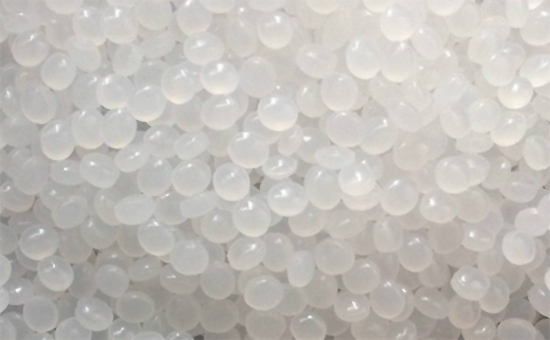
At present, tire rubber powder processed from used tires is widely used in rubber products, road paving, building materials, etc., such as rubber soles, asphalt pavements, waterproof membranes, etc., and can also be used in LLDPE (linear low density polyethylene). Made of tire rubber powder / LLDPE blend material, but too much tire rubber powder will reduce some indicators of the material, then how much is suitable for tire reclaimed rubber powder? How to eliminate the negative effects of tire rubber powder while using it?
1. Influence of tire rubber powder on mechanical properties of linear low density polyethylene
The main component of tire rubber powder is non-crystalline natural rubber and styrene-butadiene rubber. LLDPE has strong crystallization ability, and the aggregation state of the two is very different, resulting in a weak interfacial layer between the blend materials, and the tire rubber powder itself. The tensile strength is low and the hardness is low, resulting in a decrease in the hardness of the blended material and a softening of the material. At the same time, the tensile strength and the elongation at break of the thermoplastic elastomer decrease as the amount of the rubber powder increases; In actual production, the higher the fineness of the tire rubber powder, the larger the contact area with the low density linear polyethylene, the higher the dispersion of the rubber powder in the LLPPE, and the better the mechanical properties of the tire rubber powder/low density linear polyethylene blend material. .
2. The compounding agent needed in the tire rubber powder/LLDPE blending material
Linear low-density polyethylene is a kind of non-crystalline resin, and the non-crystalline part has good elasticity. The non-crystalline molecules and the amorphous tire rubber powder have strong mutual penetration at the interface, the interface effect is strengthened, the elasticity of the blend is good, and the permanent deformation is small; A certain bond strength between the rubber powder particles and the LLDPE matrix is the basis for improving the mechanical properties of the blended materials, and the addition of the compounding agent is a measure for improving the bond strength.
Coupling agent is a common surface modifier for enhancing the interfacial properties of materials. It can reduce the viscosity of matrix materials, improve the dispersibility of fillers and improve the mechanical properties of tire rubber/LLDPE blends. Coupling in coupling agents. Agents SB-182 and SB-J can activate the tire rubber powder/linear low-density polyethylene system to improve the tensile strength and elongation at break of the blended material. The dosage is generally controlled below 2%; the compatibilizer is Intermolecular bonding force, the incompatible two polymers are combined to achieve a temperature state of the compounding agent. The use of a compatibilizer in the tire rubber powder/LLDPE can improve the interface of the rubber powder/LLDPE and improve the linearity of the rubber powder. The dispersion in the density polyethylene, which in turn improves the overall performance of the blended material.
The performance of tire rubber powder/linear low-density polyethylene blend material is between rubber and plastic. Some measures are taken to increase the contact area between the two, improve the adhesion between the two, and improve the tire rubber powder in LLDPE. The degree of dispersion, processing into a new material with good elasticity, high mechanical properties and small permanent deformation, can consume a part of waste rubber tires and provide better production materials for the manufacturing industry.
Exclusive original article [commercial authorization] reprint, excerpt and excerpt in any form are prohibited without written authorization. Focus on Hongyun rubber: learn the process formula and raw material technology of producing rubber products from recycled rubber to help you reduce costs and increase profits